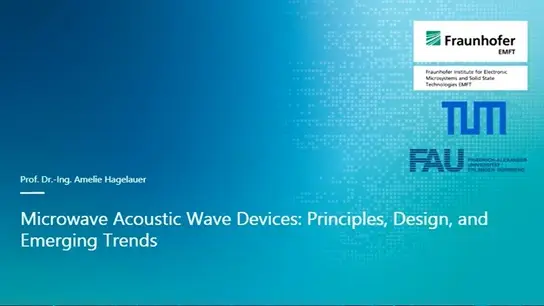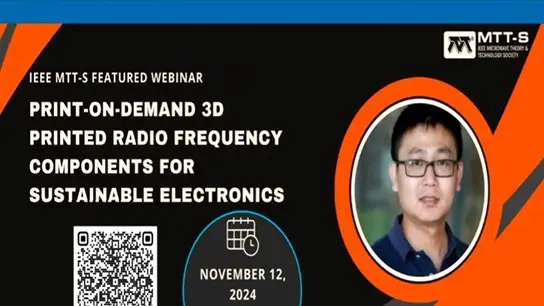-
Members: FreeMTT
IEEE Members: $9.00
Non-members: $14.00Pages/Slides: 43
12 Sep 2017
Microwave and millimeter wave dielectric spectroscopy is a powerful technique to perform a non-ionizing and non-destructive characterization of materials. In the case of biological and health sensing, the analyzing technique benefits from different appealing features. First, the dielectric relaxation phenomenon of the water molecules is located in the microwave range (around 20 GHz), and these molecules are the major constituent of the living and involve in many biological processes. Additionally, the electromagnetic fields in this frequency range penetrates beyond the capacitive bi-lipid cytoplasmic membrane of cells and consequently opens the door to intracellular investigations. Finally, the microwave band for the dielectric spectroscopy also enables the measurements of living cells directly into their culture medium, without tremendous losses induced by the rich ionic and nutrients content of the surrounding fluid. Therefore, the development of microwave dielectric spectroscopy for the analysis of the living at the molecular and cellular levels notably is very attractive for biological researches and biomedical applications, where non-invasivity, label-free and contact-less abilities as well as in-liquid measurements constitute important leitmotivs. The talk will consequently start with the motivations of developing such a sensing technique. After a reminder on the interaction of electromagnetic fields with the matter, miniature biosensors and associated techniques, which have been developed to characterize different biological materials in aqueous solution, will be presented. Issues in terms of living constraints, broadband and narrow band measurements, sensitivity, specificity and repeatability of measurements with standard deviations will notably be highlighted on different biomaterials, such as carbohydrates and amino acids for biomolecules, as well as human cells in suspension and at the single cell level. The interest of the technique will also be spatially extended toward the rapid and non-invasive analysis of tissues on animals, as well as demonstrated for the monitoring of complex biological processes.


